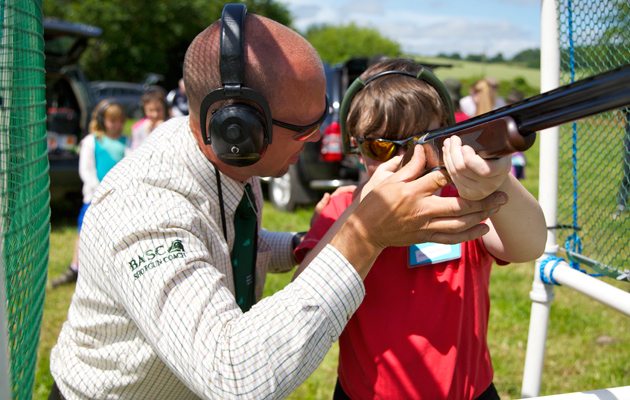Win CENS ProFlex DX5 earplugs worth £1,149 – enter here
How do we encourage more Young Shots?
What do you think are the barriers preventing youngsters from taking part in shooting?

Cast your mind back – how did you get into shooting? Was yours the traditional initiation involving years of plinking with a break-barrel airgun, learning A Father’s Advice by rote, several seasons as a yodelling youngster in the beating line and finally the hallowed day on which, under strict supervision, a single, thin Eley Fourlong .410 cartridge was ceremoniously chambered on your first pheasant day?
If your earliest steps in the world of shooting sound something like that then you experienced what most consider the time-honoured entry into the sport. But times change and, increasingly, such a traditional route into shooting is not necessarily the norm. Many come into the sport now at an older age without the benefit of enthusiastic family members or supportive friends acting as their guides. This isn’t meant disparagingly, it is simply the reality. The proliferation of excellent clayshooting grounds, the popularity of shooting as a ‘corporate’ leisure activity on a par with golf or horse racing, and the increasing urbanisation of our population mean that, for many, their first experience of shooting sports will be on a stag weekend or perhaps a charity clayshoot. This, of course, is to be encouraged – shooting is an inclusive activity and entrants at all ages will find a warm welcome whenever they decide to take it up, but what specifically are the barriers preventing youngsters from taking part in the sport?
It is easy to bemoan the perceived hurdles that hinder young shooters – the list looks like a panegyric for a lost world that no doubt was filled with buttered scones and mugs of Horlicks. We can readily point to the evils of the modern world – the prevalence of the Internet, computer games, restrictive legislation, the lack of role models, increasing urbanisation, concern for health and safety and anti-shooting propaganda – and come away profoundly demoralised, or we can address the subject and try to change the situation.
There are plenty of excellent initiatives to encourage youngsters to come into the sport – BASC’s Young Shots scheme and National Shooting Week, run by the Countryside Alliance (CA), being two of the most widely known – but determining the factors that dissuade potential young shooters will allow for better targeting of resources to address the problem.
More than just pulling the trigger
The net result of getting more youngsters involved in shooting is about more than simply encouraging the popularity of pulling the trigger, however. As David states, the quality of our countryside is reliant upon a flourishing shooting community: “When faced with opposition, conservation is shooting’s trump card. Even the most strident anti-shooting campaigner struggles to argue against the positive benefi ts that shooting brings to the countryside. By conserving the countryside, we are not only enhancing it for our own gratification, but also for that of generations to come. This is ingrained into the psyche of shooters, even if it’s not the first thing that crosses their mind each time they pick up a gun.
“As a result of shooting, at least two million hectares are managed for conservation. That’s over two-thirds of the rural land area of the UK. All that work is not just for shooters to appreciate, but for everyone. If future generations of shootersslowly diminish, who will be the countryside stewards of the future? In the absence of our sport, it is conceivable that agendadriven conservation groups would become the new kings of the countryside. Such groups would increase their land-purchasing programmes and would be free to manage their reserves for the will and pleasure of their members, the majority of whom do not get their outdoor education from the countryside, but from the television.”
Related Articles
Get the latest news delivered direct to your door
Subscribe to Shooting Times & Country
Discover the ultimate companion for field sports enthusiasts with Shooting Times & Country Magazine, the UK’s leading weekly publication that has been at the forefront of shooting culture since 1882. Subscribers gain access to expert tips, comprehensive gear reviews, seasonal advice and a vibrant community of like-minded shooters.
Save on shop price when you subscribe with weekly issues featuring in-depth articles on gundog training, exclusive member offers and access to the digital back issue library. A Shooting Times & Country subscription is more than a magazine, don’t just read about the countryside; immerse yourself in its most authoritative and engaging publication.







